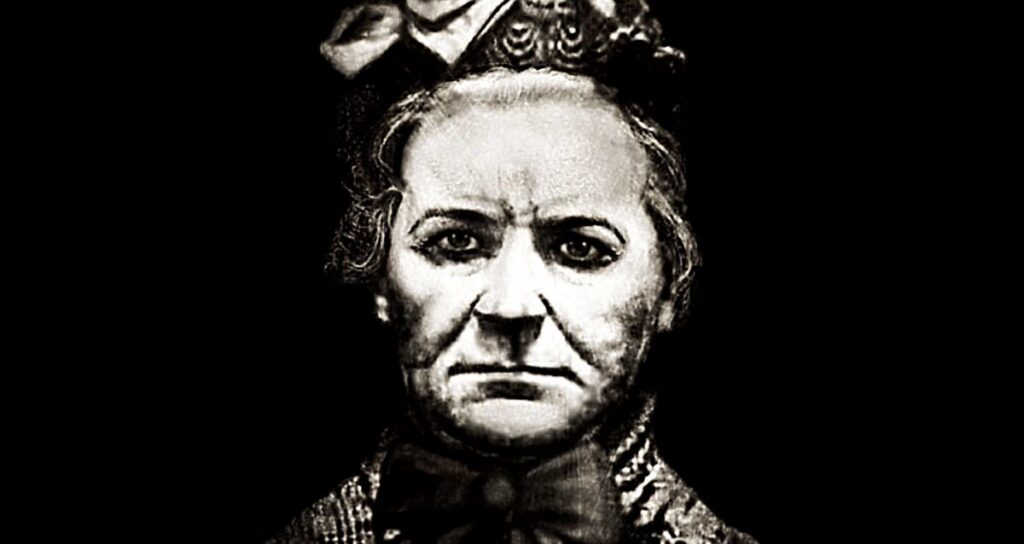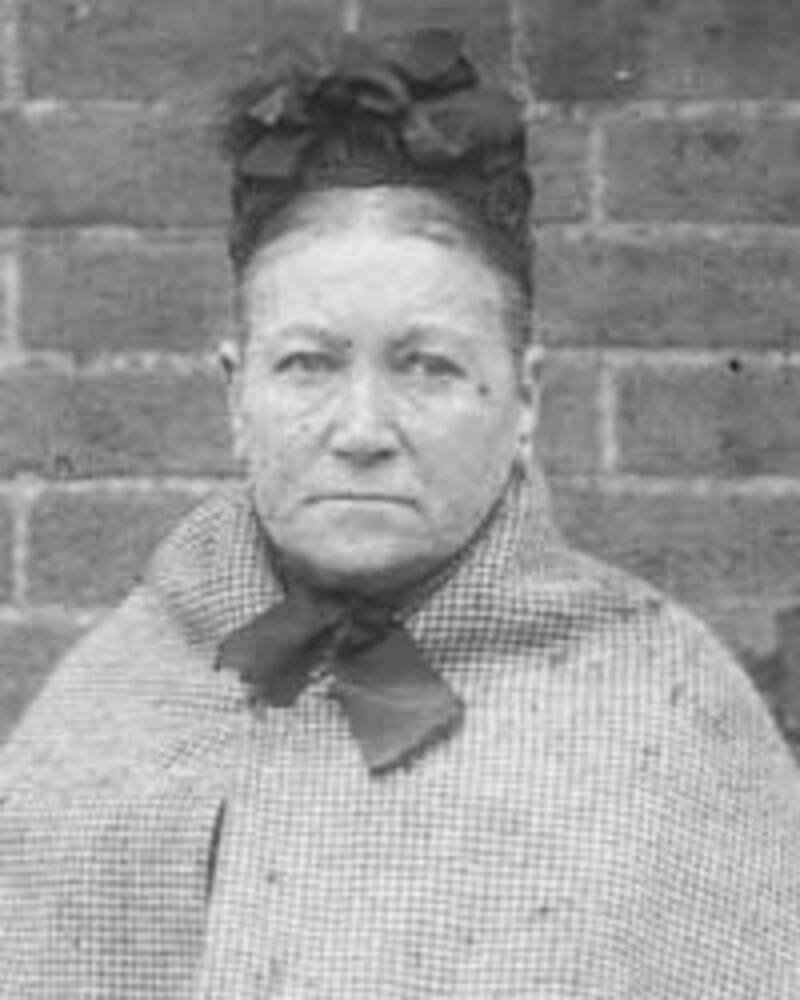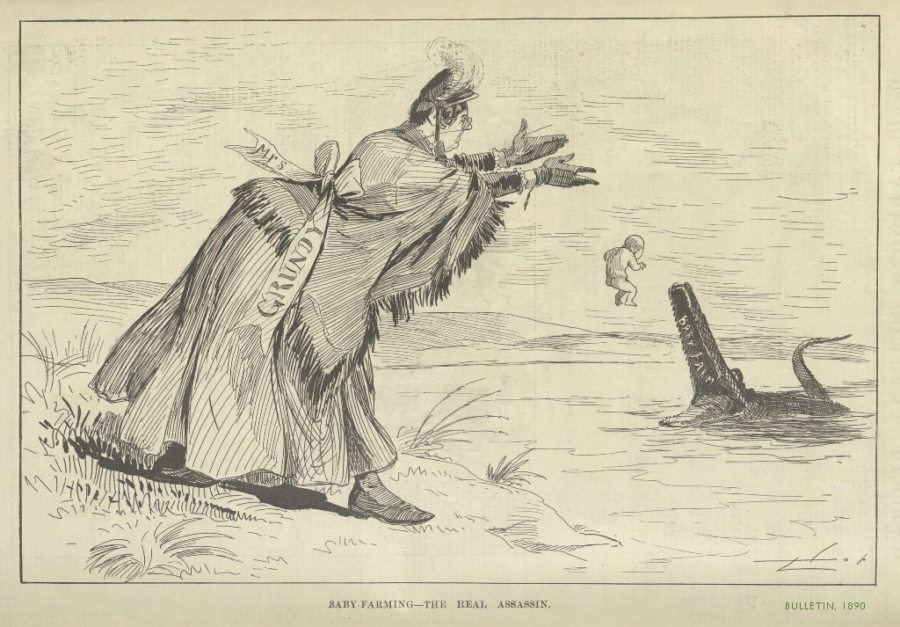
Under the premise of adopting and caring for them in loving homes, Amelia Dyer murdered between 300 and 400 babies in Victorian England.

Public DomainAmelia Dyer, a prolific serial killer who operated a “baby farm” in Victorian England.
Amelia Dyer was a baby farmer.
In 1800s Victorian England, unwed mothers could pay midwives and more well-off people to take care of their babies in exchange for payment. Depending on the health of the child, or the involvement of the father, the price could reach up to £80.
Most of the time the baby farmers would place the babies in a new home under loving care. Sometimes they would return the babies to the mothers once they were more financially stable.
And sometimes, as in the case of Amelia Dyer, they would brutally murder them and use their deaths for personal financial gain.
Amelia Dyer Was A Well Educated Caretaker, Before Becoming A Murderer
Amelia Dyer wasn’t always a murderer. She was born Amelia Elizabeth Dyer in 1837 into a large family outside of Bristol. She was well educated, often spent time reading literature and poetry, and was also a natural caretaker.
Her mother developed typhus when Amelia was a child and soon succumbed to fits and bouts of extreme mental instability. Amelia cared for her until her death in 1848, after which she lost contact with most of her family, and married George Thomas, a man 35 years her senior.
The pair had one child together before the elderly Thomas died. Finding herself single, and with a newborn, Dyer desperately needed income. During her marriage, she had trained as a nurse with a midwife, who had taught her about baby farming. However, Dyer would take it one step further.

Historic Collection / Alamy Stock PhotoDyer’s case helped to establish the National Society for the Prevention of Cruelty to Children (NSPCC) in 1884.
She began placing advertisements in local papers, claiming to be a respectable, married woman, who would provide a safe and loving home for the children. She would then demand a substantial one-time payment in exchange for her services.
However, rather than spend that payment on feeding and caring for the children, Dyer realized there was an easier way to pocket the money — getting rid of the children.
How Amelia Dyer Exploited Children’s Deaths For Financial Gain
Originally, to quickly rid herself of the children, Dyer would overdose the babies using an opioid solution meant to calm crying infants. She would then call a coroner to confirm the deaths, claiming shock that the baby had died so soon, and feigning grief over their passing.
In 1879, however, a doctor became suspicious about the number of deaths he had been called to report, wondering if they really were all accidental. He reported her to authorities, but instead of receiving a murder or manslaughter charge, she was sentenced to six months in a labor camp for neglect.
But that didn’t matter to Amelia Dyer. Upon her release, she placed more ads for a safe home and continued to collect payments for watching infants. In the event that a child she had murdered had parents that wanted it back, she would simply give them another baby.
Amelia Dyer had also realized her mistake in having coroners declare the infants’ deaths, and began disposing of the bodies herself. She would wrap the bodies in cloths and then bury them, or drop them in the river, or hide them throughout town. She also killed them in various ways, as not to establish a noticeable pattern for herself.

Public DomainAn 1890 cartoon bulletin depicting the cruelness of the baby farming operations throughout England.
She also kept a close watch on the authorities. If she felt they were getting close to catching her, she would feign a breakdown, and check herself into an asylum claiming suicidal thoughts. Once, she even tried to overdose herself, but her high tolerance to opium from a long history of abuse saved her life.
Dyer also frequently relocated to new towns, adopting new identities with each move, in order to throw the police off her trail, as well as parents looking to be reunited with their children.
It is assumed that over the course of almost 30 years, Amelia Dyer killed more than 400 children and pocketed the money from each of them. Researchers believe the number could have doubled, had she not been caught after one careless body dump.
Amelia Dyer’s Baby Farming Operation Comes To An End
In March of 1896, a bargeman floating down the Thames fished a carpetbag out of the river. Inside, he found the tiny body of a baby girl, wrapped in package wrapping paper. One savvy police officer noticed a name, almost faded, written on a corner of the paper — Mrs. Thomas — as well as an address.
The address was Amelia Dyer’s, and though police were lead to her by the body, they still couldn’t link her to the crime. So, they set up a trap.
Using a young woman as a decoy, they had her place an ad for a baby needing a good home. Dyer responded, and set up a meeting with the woman, only to walk into a police ambush.
After searching her home, police discovered the scent of human decomposition, dressmakers tape much like the kind that had been wrapped around the infant corpses neck, telegrams about adoption arrangements, advertisements, and letters from mothers asking about their children.

Steve Vidler / Alamy Stock PhotoHistorical Wanted Poster of Amelia Dyer, the Baby Murderer, in the Clink Prison Museum.
They also discovered things packed away, as if Dyer were about to move again.
Police arrested her and dredged the Thames, looking for more bodies. They found six, all of which Amelia Dyer admitted to killing. She even told police that the white tape around their necks was how she could tell.
During her trial, she pleaded guilty to only one murder and claimed insanity as a defense, citing her numerous asylum stays. However, the jury decided that they had been faked as a way to avoid prosecution.
It only took them four and a half minutes to convict her. At 9:00 a.m. on June 10, 1896, Amelia Dyer was executed.
Dyer’s case drew national attention due to the high number of deaths and the amount of time that Dyer had avoided conviction. It also sparked a revolution in adoption laws, pushing authorities to police baby farms and stop abuse.
Some historians have drawn parallels to the Jack the Ripper case, suggesting that Amelia Dyer could have been involved. After all, both had a high body count and happened at the same time, though it has never been proven they were related.
Though it is expected that her total number of victims was between 300 and 400, only three of the victims were positively identified and attributed to her.